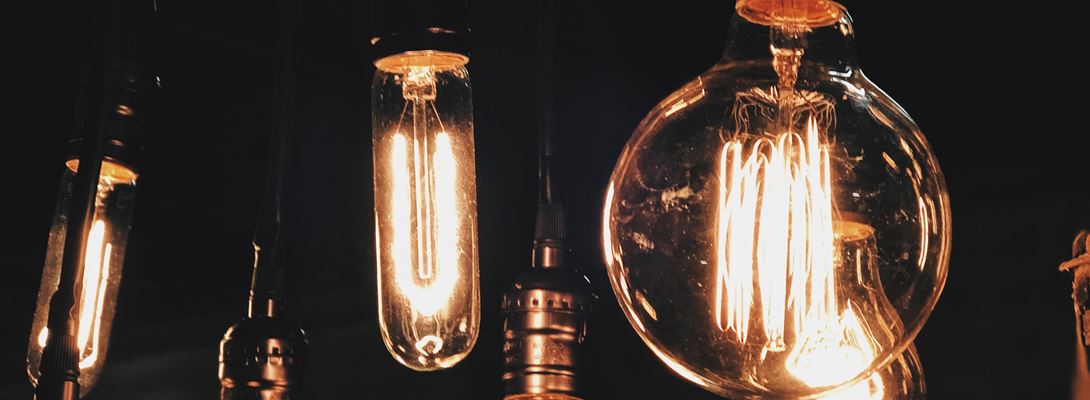1. First, the light bulb fitting
Obvious, but essential. Fat bayonet, thin bayonet. Wide screw, slim screw. Dimmable, not dimmable.
There are loads of different types, so if you’re just replacing like for like, take the old bulb along to the shop. If it’s a new light you’re buying a bulb for, write down the requirements from the box.
2. Cut down on your bills, choose an LED
LEDs (Light Emitting Diodes) are the most energy-efficient bulbs available, and will save you money on your energy bills as they are much cheaper to run. They do cost more to buy, but they rarely need replacing - the ones we found in our local DIY shop came with a 15-year guarantee.
A common complaint of LEDs when they first came on the market is that the light they emit was too harsh. But you should now be able to find an LED bulb that matches the soft yellow light of the old incandescent bulbs, if that is the look you are after – and they’re up to ten times more efficient.
3. A cheaper alternative - CFLs
If you don't have enough cash to spend on LEDs, the other energy-efficient alternatives are CFLs (Compact Fluorescent Lamps).
You may have CFLs in your home that take a little bit of time to warm up, but this is less of a problem now than it used to be.
They are not as efficient as LEDs, but are cheaper to buy than LEDs, and cheaper to run than halogens.
Choosing the right light for your room
Check the packaging. If you're used to the old system, then you're in luck. Most lightbulb packaging still displays an equivalent, from 40 watts up to 100 watts or more. But remember, wattage wasn't actually a reflection of the brightness of the old bulbs, rather the energy they used. A new LED bulb is actually only 8 - 10 watts, though they can be just as bright as traditional bulbs.
The brightness of a bulb is now measured in lumens. A traditional 60-watt incandescent bulb is the equivalent to 700+ lumens.
The warmth of the light is measured using the Kelvin scale. For a warm light that matches traditional incandescent bulbs, choose a Kelvin score of 2,700.
The package may also show a CRI, or a Colour Rendering index score. This is the effect of a light on the appearance of colour, and is rated on the CRI scale of 0 - 100. Anything above 80 is what you're looking for to make sure the colours in your home are faithfully reflected in the way they would be by daylight.
Last call for halogens
The incandescent bulbs that your parents grew up with have been completely phased out, and halogens are not far behind them.
EU regulations to promote energy efficiency mean that halogens are being removed from the market, and will be unavailable from 2018. Halogens are slightly more efficient than the traditional bulbs, but cannot compare with LEDs in the energy-saving game. So next time a bulb blows, think about replacing it with the most energy efficient option you can.
For more information about energy-efficient lighting, check out the Energy Saving Trust or the Which? guides to energy-saving products.










